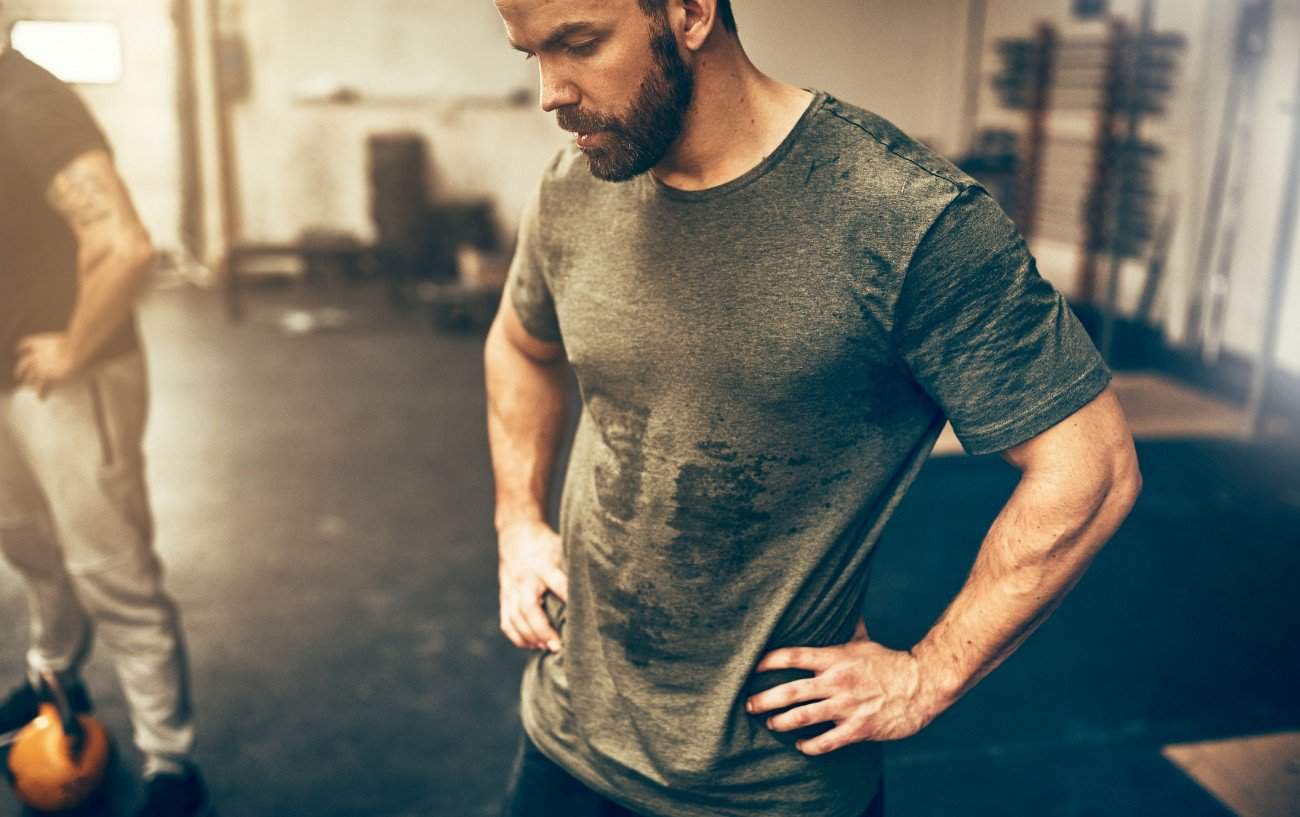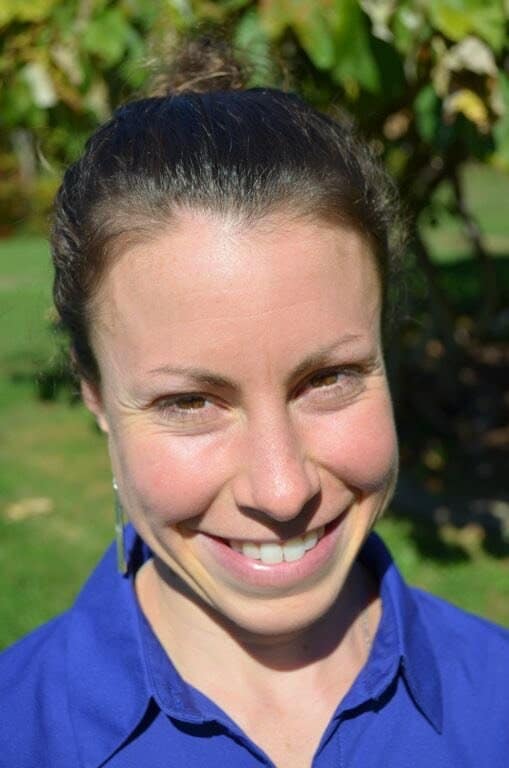Unless you are a swimmer, tennis player, rower, or weightlifter, there’s a good chance that when you choose the best stretches before or after your workout, you will likely focus on lower body stretches such as hamstring and calf stretches.
However, even runners, cyclists, and everyday athletes preparing to lift weights at the gym can benefit from doing upper body stretches before working out and after working out.
In this stretching guide, we will discuss the benefits of upper body stretches and the primary muscle groups targeted, and will provide step-by-step instructions for the following best upper body stretches to do before and after working out:
- Arm Circles
- Windmills
- Chest Stretch
- Shoulder Stretch
- Overhead Triceps Stretch
- Supine Spinal Twist
- Neck Stretch
Let’s dive in!

What Upper Body Muscles Should I Stretch?
As is likely obvious, upper body stretches target the muscles of the upper body. However, “upper body muscle groups“ can be a rather vague term.
Because “upper body muscles” is a rather nebulous term, you will find that certain muscles may or may not be included in lists of upper body muscles.
This will depend on how specific the list gets and whether the upper body is subdivided into arm muscles, back muscles, etc., or the body is solely split into upper body muscles vs. lower body muscles.
However, generally, upper body stretching routines target the following muscle groups:
Upper Body Muscles
- Muscles of the arms: Biceps, triceps, and forearm muscles.
- Muscles of the shoulders: Deltoid and rotator cuff muscles.
- Muscles of the upper back: Trapezius, rhomboids, upper lats, levator scapula, and serratus anterior.
- Muscles of the chest: Pectoralis major and minor.
- Muscles of the neck: Sternocleidomastoid and cervical flexors and extensors.

What Are the Best Upper Body Stretches for Weightlifting, Running, and Other Workouts?
The best stretching exercises for your upper body muscle groups will depend on your workout, whether you are doing upper body stretching before or after you exercise, and whether you are experiencing any particularly tight muscles or lack of mobility around a certain joint.
However, the one universal principle to follow when selecting the best upper body stretches to do in your routine is that you should focus on dynamic upper body stretches before working out and static upper body stretches after working out.
When most people think about upper body stretching, they envision static stretches.
Static stretching involves extending a muscle towards the end range of motion and then holding the position, usually for 15-30 seconds, though some people may hold static stretches for upwards of 60 seconds or more.
Rather than a constant hold at the end range of motion, dynamic stretches involve performing continuous movement patterns to extend the range of motion around a joint to stretch the muscles and mobilize the joint structures.

Studies that compared static stretching to dynamic stretching prior to exercise found that dynamic stretching helps better increase muscle strength and flexibility.1Aguilar, A. J., DiStefano, L. J., Brown, C. N., Herman, D. C., Guskiewicz, K. M., & Padua, D. A. (2012). A Dynamic Warm-up Model Increases Quadriceps Strength and Hamstring Flexibility. Journal of Strength and Conditioning Research, 26(4), 1130–1141. https://doi.org/10.1519/jsc.0b013e31822e58b6
Moreover, research suggests that dynamic stretching performed before a workout increases your range of motion and flexibility and decreases passive stiffness throughout the exercise session.2Iwata, M., Yamamoto, A., Matsuo, S., Hatano, G., Miyazaki, M., Fukaya, T., Fujiwara, M., Asai, Y., & Suzuki, S. (2019). Dynamic Stretching Has Sustained Effects on Range of Motion and Passive Stiffness of the Hamstring Muscles. Journal of Sports Science & Medicine, 18(1), 13–20. https://www.ncbi.nlm.nih.gov/pmc/articles/PMC6370952/
Additionally, studies show that dynamic stretching before a workout decreases muscle stiffness and improves range of motion during your workout.
Finally, recent evidence suggests that performing dynamic stretches before working out can improve aspects of athletic performance during the workout.3Patti, A., Giustino, V., Cataldi, S., Stoppa, V., Ferrando, F., Marvulli, R., Farì, G., Neşe, Ş. F., Bianco, A., Muscella, A., Greco, G., & Fischetti, F. (2022). Effects of 5-Week of FIFA 11+ Warm-Up Program on Explosive Strength, Speed, and Perception of Physical Exertion in Elite Female Futsal Athletes. Sports, 10(7), 100. https://doi.org/10.3390/sports10070100
On the other hand, static stretching4Medeiros, D. M., Cini, A., Sbruzzi, G., & Lima, C. S. (2016). Influence of static stretching on hamstring flexibility in healthy young adults: Systematic review and meta-analysis. Physiotherapy Theory and Practice, 32(6), 438–445. https://doi.org/10.1080/09593985.2016.1204401 has been shown to improve your range of motion and increase flexibility, and some studies have found that incorporating stretching into a cooldown can help minimize the severity of delayed-onset muscle soreness (DOMS).
Here are the seven best upper body stretches to loosen up before and after a workout. You can perform these stretches anywhere as they are no equipment, bodyweight exercises.
#1: Arm Circles

Arm circles are a good upper body dynamic stretch that helps loosen your arms, shoulders, and upper back.
Here are the steps:
- Stand upright with your arms out to the side like a giant letter “T.”
- Circle your arms forward, gradually increasing the range of motion and speed.
- Complete 15 circles.
- Circle your arms backward. Again, progressively increase the range of motion and movement speed.
- Complete 15 circles.
#2: Windmills

The windmill is one of the best upper body stretches before strength training or working out because it helps activate the entire upper body, spine, and core.
This upper body warm-up stretch is also great before exercises like running, swimming, rowing, and jump roping.
Here are the steps to perform this upper body warm-up stretch:
- Stand upright with good posture.
- Lift your right hand up straight overhead.
- In one fluid motion, sweep down with your right hand and torso, twisting your body and reaching down to the floor on the outside of your left foot (across your body). Try to keep your core tight and think about mobilizing your thoracic spine, shoulder girdle, hips, glutes, and hamstrings.
- Come all the way back up, lifting the right hand back in the air.
- Repeat on the left side.
- Keep switching sides until you have done 10 reps per side.
#3: Chest Stretch

This is a good upper body stretch after working out to stretch the pectoral muscles in the chest and the anterior deltoids (front of your shoulders)
- Stand facing a doorway with your arms out to the side so that your body forms a giant letter T.
- Step one foot far enough forward through the doorway so that your straightened arms catch on the sides of the doorway and you feel a nice stretch across your chest.
- Keep your gaze forward and spine upright.
- Hold for 30 seconds, and then switch legs.
#4: Shoulder Stretch

This upper body stretch targets the shoulders, upper back muscles, and triceps.
- Bring your right hand straight across your body towards the left shoulder so that your right hand is pointing to the left wall. Keep your right elbow straight.
- Use your left hand to help press behind the right triceps to deepen the stretch.
- Hold the stretch for 20 to 30 seconds.
- Relax and then switch sides.
#5: Overhead Triceps Stretch

This is a good upper-body stretch after lifting weights, swimming, rowing, yoga, or other upper-body exercise.
- Lift your right arm up straight overhead and bend your elbow to reach backward towards your upper back. Your right elbow should point straight up towards the ceiling or forward depending on your level of flexibility.
- Reach your left hand across over your head to push into the right elbow to deepen the stretch.
- Hold the stretch for 20 to 30 seconds.
- Relax and then switch sides.
#6: Supine Spinal Twist

A trunk twist is one of the best upper body stretches for the upper back muscles, and it can help open the chest and mobilize the spine.
- Lie on your back with your arms stretched out like a “T” for your starting position.
- Bend your knees so that your feet are flat on the floor.
- Slowly bring your knees to one side so that they are stacked with your outer knee on the bottom leg down on the floor.
- Turn your head to the opposite side (towards the outstretched arm).
- Hold for 20-30 seconds and then come back to neutral.
- Pause, and then switch sides.
#7: Neck Stretch

The best upper body stretching routine should include neck stretches, especially for cyclists, swimmers, and golf players.
- Take your left hand and bring it all the way over your head to the opposite side above your right ear.
- Use this hand to gently pull your head towards your left shoulder until you feel a gentle stretch along the right side of your neck.
- Hold for 15 to 20 seconds, and then relax.
- Switch sides.
You can repeat any of these upper body stretches for 3 or more sets or as many times throughout the day as you need.
However, if you experience any discomfort, you should immediately stop the stretch.
Consider working with a physical therapist if you are concerned about pain, tightness, or excessive laxity in your upper body joints and muscles.













